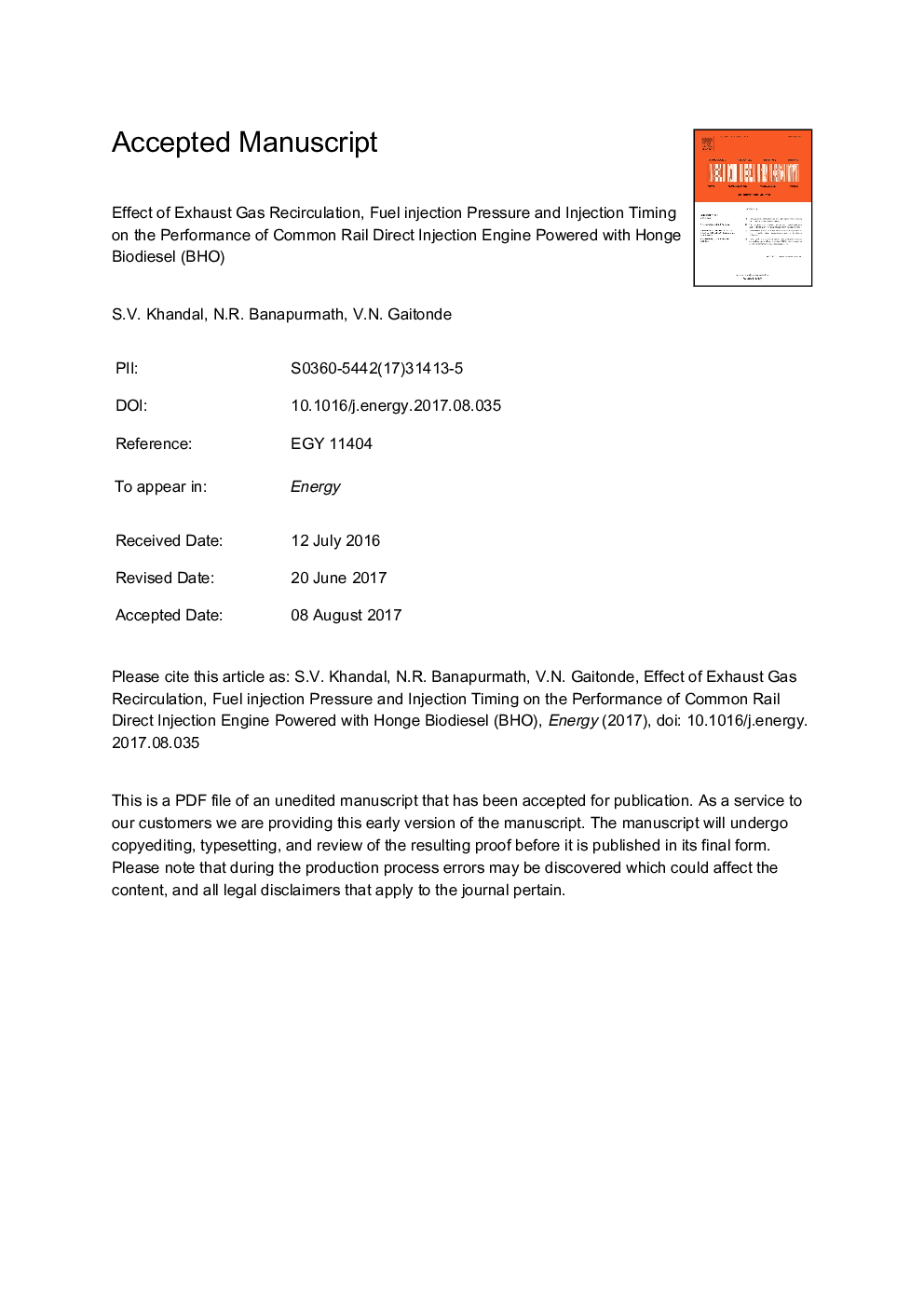| Article ID | Journal | Published Year | Pages | File Type |
|---|---|---|---|---|
| 5475640 | Energy | 2017 | 39 Pages |
Abstract
The experimental investigations on a compression ignition (CI) engine fitted with common rail direct injection (CRDI) facility is an effort towards the reduction of exhaust emissions without compromising the fuel efficiency. This work demonstrates the performance, combustion and engine out emissions of a single cylinder, four stroke, water cooled, CRDI engine powered with Honge oil biodiesel (BHO) by varying the fuel injection timing (t), fuel injection pressure (p) and exhaust gas recirculation (e). The experiments were conducted as per the full factorial design (FFD). The response surface methodology (RSM) based mathematical models have been developed to predict the identified engine characteristics. The response surface analysis reveals that 't' of 10° bTDC and 'p' of 900 bar yield higher brake thermal efficiency (BTE) and lower smoke, carbon monoxide (CO), hydrocarbon (HC), oxides of nitrogen (NOx) emissions. Under these two operating conditions, ignition delay (ID) as well as combustion duration (CD) were minimum with higher peak pressure (Pmax) and heat release rate (HRR). The employment of 15% 'e' reduces the NOx emission by 36.9%; but the use of 21% 'e' leads to the drastic reduction in NOx by 46.8%, without much compromising the BTE. Also, the engine operation provides the complete freedom from diesel fuel and thereby providing energy security and sustainable source of energy.
Related Topics
Physical Sciences and Engineering
Energy
Energy (General)
Authors
S.V. Khandal, N.R. Banapurmath, V.N. Gaitonde,
